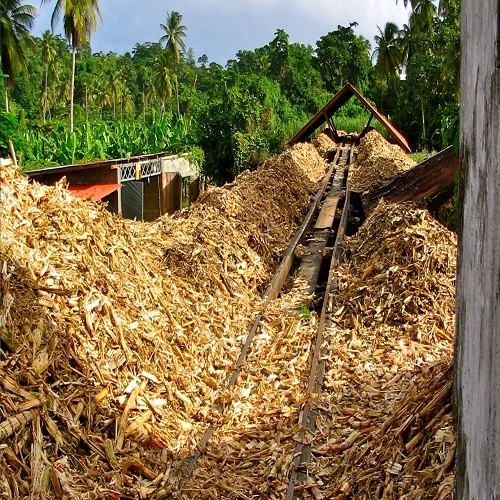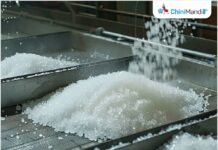Introduction:
The chemical industry, a cornerstone of modern civilization, is heavily reliant on fossil fuels. This dependence comes at a significant cost, contributing to environmental problems like climate change and air pollution. However, a beacon of hope emerges in the form of levulinic acid (LA), a bio-based chemical with the potential to revolutionize various industries. Derived from abundant and renewable biomass sources like bagasse, LA offers a versatile platform for creating a multitude of valuable products. This article delves deeper into the eco-friendly production process of LA from bagasse, explores its diverse applications, and analyzes the promising market outlook for this revolutionary chemical.
From Bagasse Waste to Bio-Based Chemicals: A Sustainable Production Process
The magic of levulinic acid lies in its origin story. Unlike traditional chemicals derived from petroleum, LA leverages readily available renewable resources. Bagasse, a fibrous byproduct generated after sugarcane juice extraction, gets a new lease on life. Through a process called acid hydrolysis, which essentially involves breaking down bagasse using a diluted acid solution (like sulfuric or hydrochloric acid) at high temperatures, this waste material transforms into LA. This innovative process promotes a circular economy by utilizing waste from one process as an input for another, reducing reliance on virgin resources and minimizing environmental impact. Let’s take a closer look at this transformation:
- Breaking Down the Biomass: Bagasse is primarily composed of cellulose and hemicellulose, complex carbohydrates. Acid hydrolysis breaks down these components into simpler sugars. Think of it like using a strong acid to chop long chains of sugar molecules into smaller, more manageable pieces.
- Unlocking Levulinic Acid’s Potential: The obtained sugars from hydrolysis undergo further conversion into levulinic acid. This process involves rearranging the sugar molecules under acidic conditions. Optimizing factors like reaction temperature, acid concentration, residence time (the duration the biomass spends in the reaction), and the liquid-to-solid ratio of the reaction mixture plays a crucial role in maximizing LA yield. Studies have shown promising results, with yields ranging from 5.40 mg/mL to 16.25%, indicating the potential for efficient conversion of bagasse into levulinic acid.
A Global Quest for Innovation: Beyond Bagasse and the Biofine Process
While bagasse conversion is a prominent approach, LA production is not limited to a single feedstock. Researchers worldwide are actively exploring ways to diversify feedstock options and optimize the production process:
- Global Advancements: Regions like Asia Pacific (e.g., China, India) and Europe (e.g., France, Germany) are at the forefront of levulinic acid research. They are constantly innovating and developing new technologies to improve conversion efficiency and explore alternative feedstocks like corn stover or switchgrass, further expanding the potential for sustainable LA production. Some exciting advancements include utilizing ionic liquids (special salts that remain liquid at room temperature) or enzymatic processes (using enzymes as catalysts to break down biomass) for a potentially more efficient and environmentally friendly production process.
- The Biofine Process: An Alternative Approach: Beyond acid hydrolysis, the Biofine process offers another method for LA production. This method utilizes a solid acid catalyst and an organic solvent co-solvent system. This approach has the potential advantages of catalyst reusability and higher product purity compared to traditional acid hydrolysis.
Unlocking Commercial Potential: Challenges and Opportunities
The production of levulinic acid offers not only environmental benefits but also holds economic promise. Studies suggest that with further development and scale-up, levulinic acid production can be a potentially profitable venture. However, some challenges need to be addressed to unlock its full commercial potential:
- Technology Readiness Level (TRL): TRL is a metric used to assess the maturity of a technology. Here’s a breakdown of the TRL levels for levulinic acid production:
- Bagasse: TRL 7-8 (pilot plants operational, challenges in cost optimization and market establishment)
- Other Agri-residue: TRL 5-6 (research ongoing for efficient extraction methods)
The challenges at TRL 7-8 for bagasse conversion primarily lie in cost optimization. Bringing down production costs to compete effectively with traditional chemicals is crucial for wider adoption. Additionally, market establishment requires creating a robust demand for levulinic acid derivatives across various industries.
- Market Development: Widespread commercial production of levulinic acid is limited currently. A few companies operate smaller-scale plants (tens to hundreds of tonnes per year) primarily for demonstration purposes. To overcome this hurdle:
- Pilot-Scale Players: Research institutions and private companies like the Indian Institute of Technology (IIT) Guwahati and global examples like Neste (Finland) and GF Biochemicals (US) are actively involved in pilot-scale production
- Market Development (continued):
- Pilot-Scale Players (continued): Their efforts pave the way for future large-scale commercialization.
- Technology Landscape: Technology licensing opportunities are limited at present. However, as the industry matures, more licensing and joint venture (JV) options might emerge, fostering collaboration and accelerating technology adoption.
- Competitive Landscape: The market for levulinic acid derivatives like GVL is not yet fully established. However, potential future competition might come from established chemical companies producing similar products from traditional (fossil fuel-based) sources. Levulinic acid will need to demonstrate cost-competitiveness and performance advantages to gain a strong foothold in the market.
Market Analysis:
- Market Size and Growth Rate: The global market for levulinic acid and its derivatives is estimated to be around $0.5 billion and is projected to grow at a promising CAGR (Compound Annual Growth Rate) of 8-10% over the next five years, indicating significant potential for market expansion.
- Key Applications: Levulinic acid serves as a platform chemical for various products with increasing demand in a sustainability-conscious world:
- Bio-based solvents (e.g., GVL): GVL finds applications in various industries, including synthetic rubber production, pharmaceuticals, and even as a potential biofuel additive.
- Bioplastics: Levulinic acid can be a starting material for the synthesis of bioplastics, offering a more eco-friendly alternative to traditional plastic derived from petroleum.
- Adipic acid (nylon precursor): This chemical is a building block for nylon, a widely used polymer in textiles and various industrial applications. Levulinic acid can potentially replace petroleum-derived sources for adipic acid production.
- Potential drug candidates: Research is ongoing to explore the potential of levulinic acid derivatives for developing new pharmaceuticals.
- Agricultural and cosmetic applications: Levulinic acid derivatives might find applications in herbicides, fungicides, or even as ingredients in cosmetic products due to their potential biodegradability and other properties.
- Potential Substitutes: Depending on the specific application, alternatives to levulinic acid derivatives might include:
- Traditional petroleum-derived solvents: These are often cheaper currently but have a larger environmental footprint.
- Bio-based alternatives from different feedstocks: These might offer similar sustainability benefits but could face challenges related to feedstock availability or production costs.
However, levulinic acid offers a compelling combination of advantages:
Sustainability: Derived from renewable resources and potentially offering a lower carbon footprint compared to traditional alternatives.
Performance: Levulinic acid derivatives can exhibit properties comparable or even superior to traditional options in some applications.
Cost-Competitiveness: With advancements in technology and scale-up, levulinic acid production has the potential to become cost-competitive in the future.
These factors position levulinic acid as a strong contender in the marketplace, especially as sustainability concerns continue to grow.
Production Considerations:
- Plant Capacity and Feedstock Requirements:
- Typical plant capacities for commercial levulinic acid production can range from 10,000 tonnes per annum (KTPA) to over 50,000 KTPA.
- A 10,000 KTPA levulinic acid plant might require roughly 40,000 to 50,000 tonnes of bagasse annually, highlighting the potential economic benefits for regions with abundant sugarcane production.
- Alternative Feedstock: Corn stover, switchgrass, and other lignocellulosic biomass sources can be used as alternatives to bagasse, offering geographical flexibility and reduced reliance on a single feedstock.
- CAPEX (Capital Expenditure): The estimated CAPEX for setting up a 10,000 KTPA levulinic acid production plant can range from $50 million to $100 million.
- Returns: EBITDA (Earnings Before Interest, Taxes, Depreciation, and Amortization) is a profitability metric that reflects a company’s operating income. ROCE (Return on Capital Employed) is another profitability measure that assesses how efficiently a company generates profits from its invested capital. Data on specific EBITDA and ROCE for levulinic acid production from bagasse is limited due to the nascent stage of commercialization. However, with increasing market demand and potential cost reductions, the industry is expected to offer attractive returns in the future, making it an interesting proposition for investors.
Conclusion: A Sustainable Game Changer on the Horizon
Levulinic acid, derived from a waste product like bagasse, embodies the essence of sustainability. Its versatility, diverse applications, and growing market potential make it a key player in the transition towards a more sustainable chemical industry. As research and development efforts continue, levulinic acid is poised to become a game changer, paving the way for a greener future through innovative and bio-based solutions. However, overcoming challenges like cost optimization and market development will require a collaborative effort from researchers, industry leaders, and policymakers. By investing in research, developing efficient production methods, and creating supportive policies, levulinic acid has the potential to revolutionize the chemical industry and contribute to a more sustainable future for all.
Disclaimer: The views and opinions expressed in the article by Dilip Patil, Managing Director of Samarth SSK Ltd., are solely his own.












